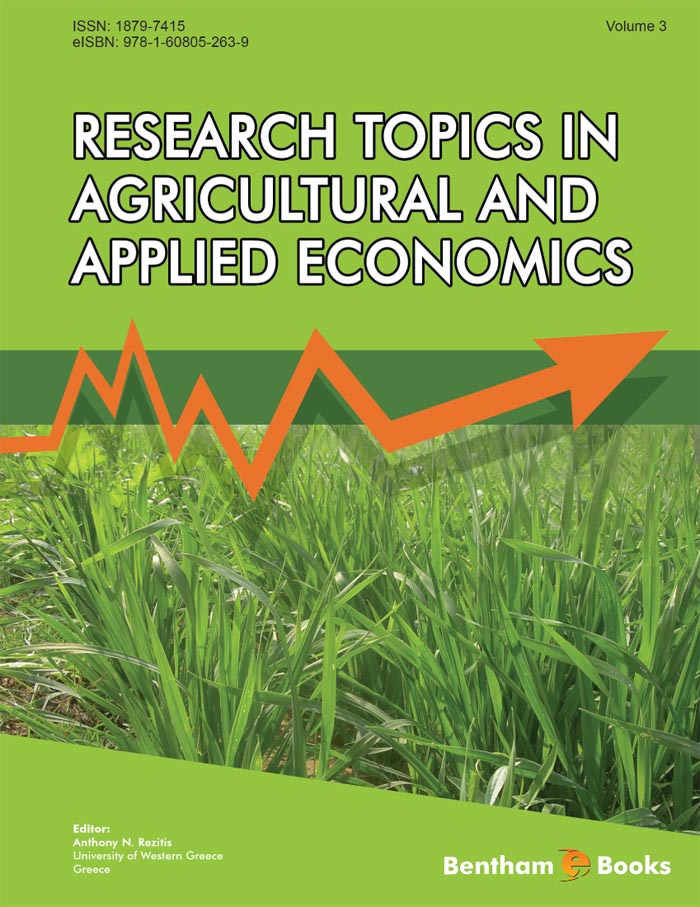The aim of the e-book series of Research Topics in Agricultural &; Applied Economics (RTAAE) is to publish high quality economic research applied in both the agricultural and non-agricultural sectors of the economy. Subject matter areas of this e-book series include, among others, supply and demand analysis, technical change and productivity, industrial organization, labor economics, growth and development, environmental economics, marketing, business economics and finance. By covering a broad variety of economic research topics, this e-book series is addressed to a wide spectrum of an academic agricultural and applied economic researchers and scientists but it could also be useful to industry specialists and government policymakers. The present volume of RTAAE (Vol. 3) contains the following 9 chapters:
Chapter 1:
entitled “Milk production forecasting by a neuro-fuzzy model”, uses a hybrid intelligent system called ANFIS (Adaptive Neuro Fuzzy Inference System) for predicting milk production. The results indicate the superiority of the ANFIS model when compared with the two conventional models: an Autoregressive (AR) and an Autoregressive Moving Average model (ARMA).
Chapter 2:
entitled “The role of production contracts in the co-ordination of agri-food chain: evidence and future issues for the durum wheat chain in Italy”, explores the role of production contracts in the co-ordination of the agri-food chain, taking into account evidence from the particular case of the durum wheat chain in Italy.
Chapter 3:
entitled “Effects of the European Union Farm Credit Programs on Efficiency and Productivity of the Greek Agricultural Sector: A Stochastic DEA Application”, examines technical efficiency and productivity growth of Greek farms participating in the 1994 European Union Farm Credit Programs using the approach developed by Simar and Wilson to bootstrapping both DEA efficiency measures and Malmquist productivity indices.
Chapter 4:
entitled “Institutional Innovations in the Common Agricultural Policy: A Theoretical Approach based on Legitimacy”, analyzes the role of different exogenous and endogenous factors which have been boosted or slowed down by CAP reforms. The main results show that the EU institutional structure is a fundamental factor.
Chapter 5:
entitled “Agricultural Externalities and Environmental Regulation: The Case of Manure Management and Spreading Land Allocation”, describes how the measures are introduced by the European regulation on manure management are incorporated into the theoretical analysis framework for studying the issue of nonpoint externality especially, agricultural runoff.
Chapter 6:
entitled “Energy Crops Situation in Castile and Leon: Incentives and Barriers to Success”, examines the current situation and the possibilities of development energy crops by Castile and Leon farmers using the Rural Rapid Appraisal (RRA) and Strengths, Weaknesses, Opportunities, Threats (SWOT) methods.
Chapter 7:
entitled “Governing of Agro-Ecosystem Services in Bulgaria”, incorporates interdisciplinary New Institutional and Transaction Costs Economics and analyzes the governance of agro-ecosystem services in Bulgaria.
Chapter 8:
entitled “Ex Post Liability for Loss vs. Ex Ante Liability Insurance as Solutions to Reversal Risk in Carbon Offset Projects”, examines how ex-post liability rules and ex ante liability insurance requirements can affect the nature of contractual agreement between an investor and a host, and the induced level of effort under asymmetric information.
Chapter 9:
entitled “A Choice Experiments Application in Transport Infrastructure: A Case Study on Travel Time Savings, Accidents and Pollution Reduction”, presents the results of a Choice Experiment aiming to value different characteristics relating to the construction of a public highway in Greece.
Anthony N. Rezitis
University of Western Greece

